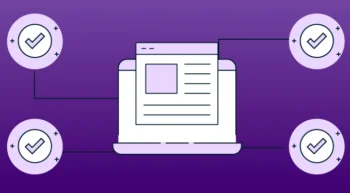BlogCompliance
Unlocking Vendor Assurance: A Deep Dive into CORL Technologies’ Assessment Suite
5 Minute Read
Read Unlocking Vendor Assurance: A Deep Dive into CORL Technologies’ Assessment SuiteCybersecurity
By CORL Technologies | February 12, 2024
The dependency on third-party vendors in the healthcare industry has escalated rapidly, introducing significant cybersecurity risks that can no longer be adequately addressed by traditional control questionnaires. The complexity and gravity of managing these risks necessitate a robust Third Party Risk Management (TPRM) program, which prioritizes stringent cybersecurity assurances. In this post, we will emphasize the importance of requesting assurances such as HITRUST, SOC 2/Type 2, ISO 27001, and FedRAMP from vendors with high inherent risks, and we will specifically explore how to interpret the key points from a SOC 2 report.
Healthcare organizations are heavily reliant upon third-party vendors for critical business functions, leveraging digital technologies to enhance patient care and operational efficiency. Yet, every external vendor relationship potentially exposes providers to vulnerabilities. Recent incidents involving vulnerabilities from major vendors like Ivanti serve as stark reminders of the potential implications of security breaches, which can pass through third-party channels into larger provider networks.
So, how does a healthcare organization ensure its vendors uphold the same security standards they maintain internally? There are many answers to this question that include the likes of vendor assessment, continuous monitoring tools, contract terms, and incident response communication protocols with your vendors. However, the first step lies in requiring and thoroughly examining relevant cybersecurity assurance documents during the pre-contract phase.
Validated assurances such as HITRUST, SOC 2/Type 2, ISO 27001, and FedRAMP are critical tools for evaluating vendor security practices. Through validation and testing by independent parties, these frameworks and certifications can demonstrate a control environment much more thoroughly than a self-attested questionnaire ever could. They highlight an organization’s commitment to security, availability, confidentiality, processing integrity, and privacy.
The SOC 2 report, in particular, has become a cost-effective vehicle for healthcare organizations to assess the effectiveness of their controls around security and privacy. A SOC 2 report offers an in-depth look at how a vendor manages data, specifically focusing on five trust service principles. However, deciphering these intricately detailed reports requires a specific set of skills.
The types of SOC 2 reports – whether Type 1 or Type 2 – will dictate the level of assurance provided, with Type 2 offering a more comprehensive review over a period as opposed to a single moment in time. Within a SOC 2 report, it is crucial to scrutinize sections such as the auditor’s opinion, which gives an overall assessment of the control environment. Management’s assertion, system description and comprehensive testing results give further insights into how well vendors protect the data they handle.
Reading the system description section is particularly important, as it should cover the services and systems your organization actually uses. Scoping factors like this are important to identify to tailor security measures appropriately.
When interpreting these reports, pay close attention to any qualified opinions, which could signal issues with the vendor’s control environment. It is also invaluable to understand the implications of complementary user entity controls and how they fit into your organization’s responsibilities.
For deeper insights on interpreting a SOC 2 report from a vendor risk management perspective, Meditology Services provides a comprehensive guide. This valuable resource, penned by compliance and information security expert Alan DeVaughan, outlines the report sections and considerations necessary for a thorough evaluation.
Requiring cybersecurity assurances does more than just enhance security; it also significantly speeds up the TPRM process. Instead of the back and forth that often accompanies questionnaires, these assurance documents provide a standardized method of evaluation, mapping out a clearer path for consistent risk assessments. If you need a platform specifically designed around the concept of instantly exchanging assurances and limiting the back-and-forth of traditional control questionnaires between healthcare organizations and their vendors, check out CORL Cleared.
The challenges of managing third-party risk in the healthcare sector are not trivial, but neither are they insurmountable. Integrating cybersecurity assurances into your TPRM program and learning to read and understand them effectively can greatly increase your ability to manage vendor risk. This approach is essential for enhancing an organization’s risk posture and ensuring business resiliency in an environment where third-party engagements are extensive.
In conclusion, adopting a comprehensive and informed approach to cybersecurity assurances is mandatory in today’s intricate cyber threat landscape, especially within the healthcare industry, where the stakes are exceptionally high. Cybersecurity assurances such as HITRUST, SOC 2/Type 2, ISO 27001, and FedRAMP offer a validated representation of a vendor’s commitment to data protection and the strength of their control environment, integral for safeguarding patient data and preserving trust.
We encourage all cybersecurity professionals within the healthcare space, from CISOs to Risk Managers and Third Party Risk Analysts, to elevate their TPRM programs beyond traditional methods and harness the power of comprehensive cybersecurity assurance frameworks. Resources such as the guide provided by Meditology Services are invaluable in this journey, providing the expertise and understanding needed to navigate these complex yet indispensable documents.
Effective third-party risk management is no longer a supplementary part of cybersecurity strategy; it is a critical pillar that requires due diligence, expertise, and continued innovation. Make cybersecurity assurances a cornerstone of your TPRM strategy and secure your organization’s future in the digitally interconnected world of healthcare.
 CORL Technologies
CORL Technologies
CORL transforms TPRM chaos into clarity
CORL is a leading provider of vendor risk management solutions for the healthcare industry. CORL gets results by scaling organizational and vendor risk programs through our healthcare vendor risk clearinghouse solution, dashboard reporting that business owners can understand, and proven workflows that drive measurable risk reduction. CORL accelerates the speed of vendor risk assessments and holds vendors accountable for remediating risk exposures.
Related Posts
BlogCompliance
By CORL Technologies | June 24, 2025
5 Minute Read
Read Unlocking Vendor Assurance: A Deep Dive into CORL Technologies’ Assessment Suite
BlogCompliance
By CORL Technologies | April 23, 2025
2 Minute Read
Read The Power of Human + AI: CORL’s Differentiated Approach to Healthcare Risk Management
BlogCompliance
By CORL Technologies | April 17, 2025
2 Minute Read
Read Introducing CORL’s Core 4 Compliance Checklist: A Smarter Path to Healthcare Vendor Compliance
Webinars
WEBINAR AI + Healthcare: The Evolving Cybersecurity Equation The healthcare industry is undergoing a profound transformation, driven by the integration of artificial intelligence (AI) into various facets of healthcare delivery, diagnosis, and treatment. AI technology has the potential to revolutionize healthcare, improving care quality, reducing costs, enhancing efficiency, and even improving outcomes. However, with these […]